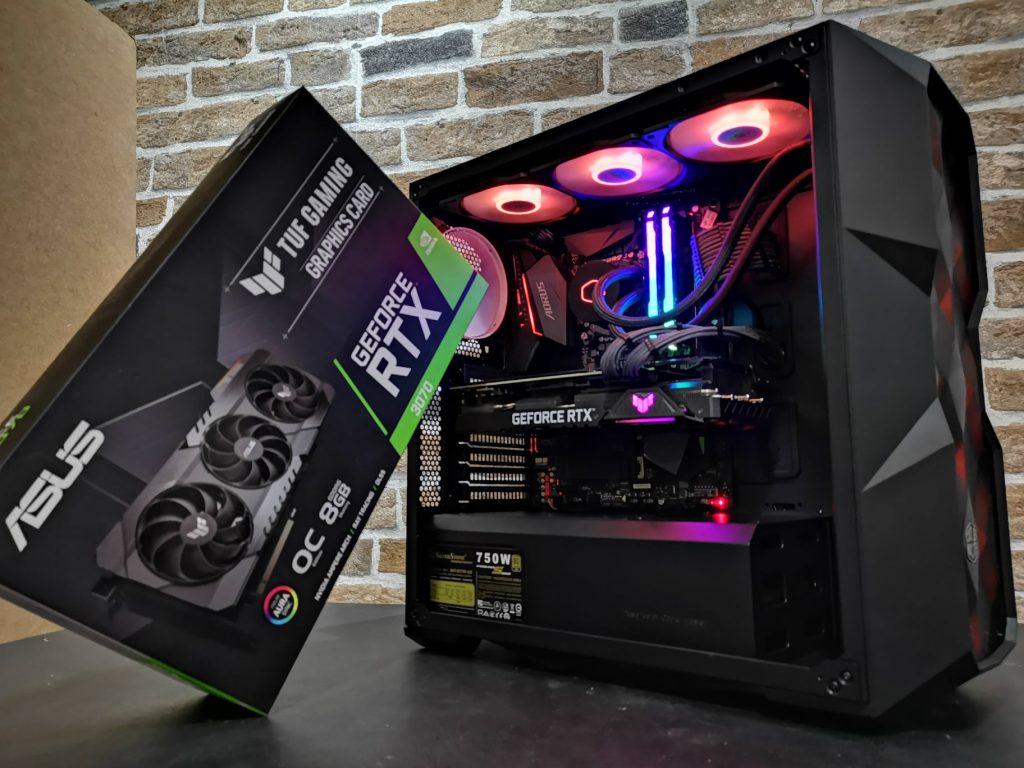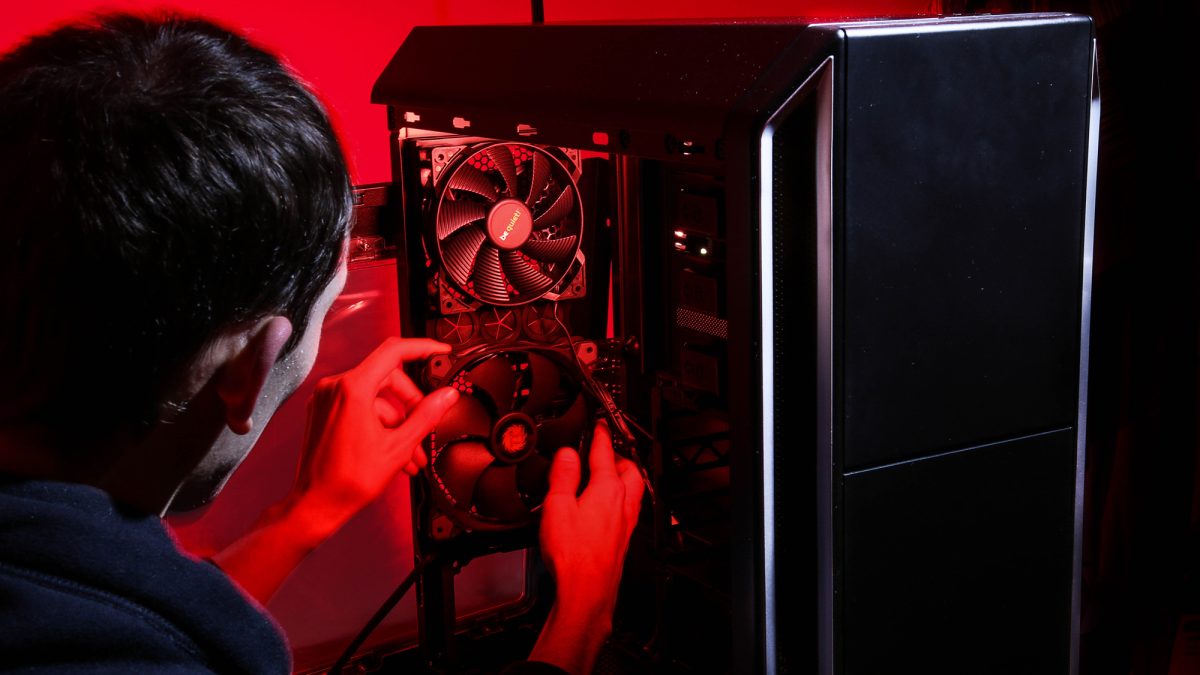We’ve seen a huge surge recently in the number of consumers jumping right into their first PC build. Embarking on your build can be daunting, but to help we’ve compiled a list you can follow along with and tick off as you go. This part of the guide covers all of the main components you need to build a PC:
CPU
The CPU is arguably the most important component of any PC build and an area where you will spend a large chunk of your money. Standing for ‘central processing unit‘, this part handles all of the calculations, logic, and tasks that your PC will undergo. CPUs as a general rule are primarily square and slot into a CPU socket located on your motherboard. There are two main manufacturers that dominate the CPU space, Intel and AMD.
When buying an AMD CPU you’ll be looking at the Ryzen series of CPUs. AMD’s existing stack of Ryzen 5000 CPUs are strong and provide options for a range of buyers, but with Ryzen 7000 CPUs on the horizon, you’ll have even more choice available. On the Intel side, your main options are the Intel 12th-generation and 11th-generation CPUs. The newest 12000, Alder Lake series are the most recent offering for consumers, bringing new features such as PCI-E 5.0, DDR5 memory support, and widespread Gen 4 SSD compatibility.

Motherboard
A motherboard is effectively a large circuit board that connects all of your other components together. Dependent on the CPU you’ve chosen, the chipset and motherboard you pick will have a direct impact on the features available to you. For example, Ryzen 5000 CPUs currently do not have access to DDR5 memory or PCI-E 5.0 slots, but Intel’s latest motherboards do (dependent on your chipset).
The price spectrum for motherboards varies massively, and ultimately the brand and type of motherboard that you pick out is entirely up to you as a consumer. Pick out the features you need, and shop for a motherboard accordingly.
Graphics Card
A graphics card (or GPU) is likely to be the most expensive component in your build, and will also be the primary driving force for your build’s overall power consumption. A GPU is essentially an add-in card that is responsible for all of the output to your display and performance in games. Graphics cards synergize with all of the other components in your build, so it is important that you pick out a card that matches the power of your other parts.
RAM
RAM (often referred to as memory) is responsible for the short-term storage that your CPU needs to access constantly. RAM is a vital component, but the capacity, clock speed, and generation will affect the performance of your build. If you plan on putting a budget system together, 16GB of RAM will be perfectly fine, but for consumers looking for the best of the best, you’ll want to pick up a kit of four sticks with high clock speeds. It might even be worth considering the latest DDR5 RAM standard if opting for Intel’s 12-gen or AMD’s Ryzen 7000 series CPUs.
CPU Cooler
Quite simply, the purpose of a CPU cooler is to keep your CPU cool. Processors put out a fair amount of heat and for this reason, they need their own individual cooling solution to prevent overheating.
There are two different types of cooling that you can choose – air or liquid. Air coolers are generally cheaper, but have less thermal capacity. Air-based cooling solutions generally consist of a heatsink fitted with heat pipes and fans to draw air through the system. Liquid AIOs will have a pump and block that sits on top of the CPU, and a radiator that can be mounted within your system. This type of cooler is more efficient at dissipating heat but will cost you more money in exchange.

Storage
The storage you opt for will determine elements of performance, but also load times and bottlenecking within your system. There are two common types of storage – SSDs and Hard Drives. You’ll need some form of storage for your build in order to host your operating system and any games or applications.
The type of storage you decide to buy will have a direct impact on the load times for both your games and PC boot-up times. For example, a PC using a hard drive to boot could be facing up to a minute wait before it finally lands into Windows. An SSD on the other hand is likely to be in Windows within a matter of seconds from turning your PC on.
Power Supply
Your power supply (PSU) is responsible for providing the right wattage to the individual components within your build. Every power supply comes with power connectors that need to be connected up to each part, such as your motherboard, GPU, and any storage drives.
When shopping for a PSU it is worth looking at the wattage, efficiency rating, and whether the PSU is modular or not. Modular units allow you to solely plug in the cables you need, helping to keep cable management more simple and streamlined in a build. A power supply calculator will help you figure out the exact wattage you need.
Case
A PC case is likely to be the last component you buy for your build. A case houses the entirety of your components, while also providing fans for airflow, and connectivity in the form of your power button, audio jacks, and various USB ports.
The type of case you choose will depend on factors such as price, aesthetics, IO, and more. You’ll want to ensure there is enough room for any water-cooling radiators, fans, the length of your GPU, and the height of a CPU air cooler.
Operating System
Once you’ve finished the hardware side of your build, it is time to look at the software side.
There are three main operating systems on the market (Windows, Mac OS, and Linux), but we would recommend sticking with Windows for gaming. Microsoft’s Windows 10 and 11 provide a great track record for gaming and are by far and away the most popular OS amongst gamers.
In part 2 of this series, we’ll go through the actual steps on how to build your gaming PC from scratch. We look forward to seeing you there.


2 replies on “Step-by-Step Guide to Building the Perfect Gaming PC in 2023 – Part 1”
[…] Sound off in the comments section below, and tell us what you want to read next and if you want to read more about gifts. […]
[…] on from part one of this mini-series, where we discussed the different components needed to build your gaming PC, […]